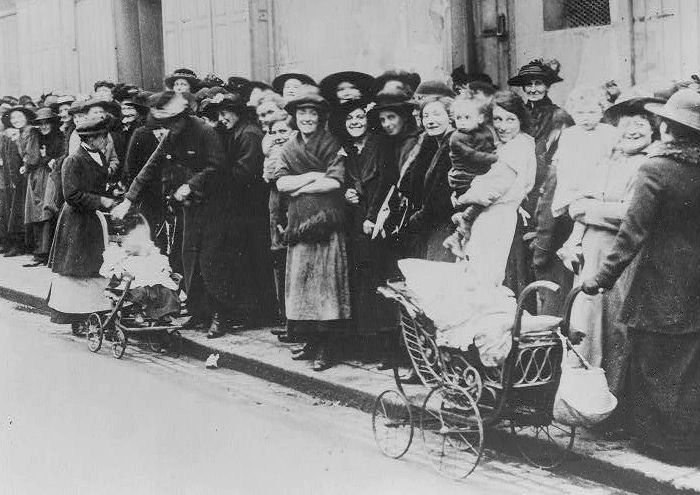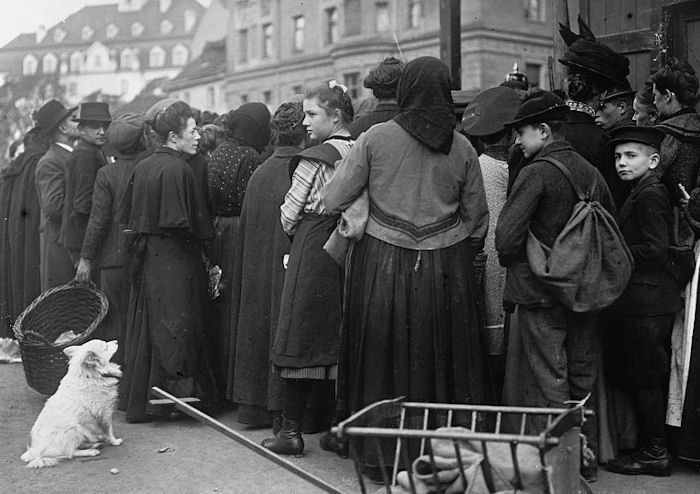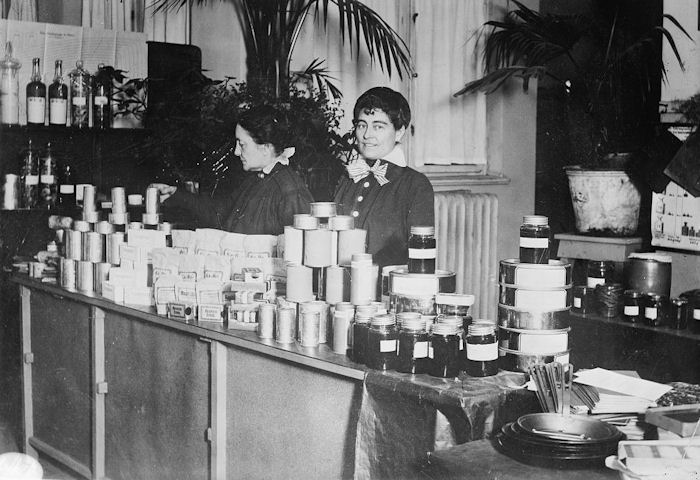

| British women keep cheerful while waiting in a long bread line during food rationing. Below: Germans wait patiently in their food line. The ongoing Allied naval blockade kept out the food imports that Germany had come to rely upon in the prewar years to feed its burgeoning population of 70 million. Shortages included butter, margarine, cooking fat, sugar, potatoes, coffee, tea, fruit, and meat due to the lack of sufficient cattle feed. All homegrown foodstuffs went first to Germany's soldiers. The remainder was rationed to the civilian population utilizing coupons allowing the purchase of a particular item on its designated day. This caused food lines as everyone lined up by dawn at the nearby shop to get their ration before the shop ran out. The food situation worsened year-by-year, becoming critical in early 1917 after the entire potato crop failed. Ultimately the food shortage weakened German soldiers fighting on the Western Front, expected to exist on a fraction of the calories, compared to their well-fed enemies. |

| Below: As the food shortage became critical in Germany, substitute (ersatz) foodstuffs were made available such as those on display in this shop. They include coffee made from chicory, herbs, berries, or other inventive mixtures. There were also substitutes for milk, sugar, bread, eggs, marmalade, cocoa, and chocolate--all of which tasted quite poorly compared to the real thing. |

Return to World War I Timeline - 1916
The History Place - World War I Index Page
The History Place Main Index Page
Copyright © 2009 The History Place™ All Rights Reserved
Terms of use: Private home/school non-commercial, non-Internet re-usage only is allowed of any text, graphics, photos, audio clips, other electronic files or materials from The History Place.